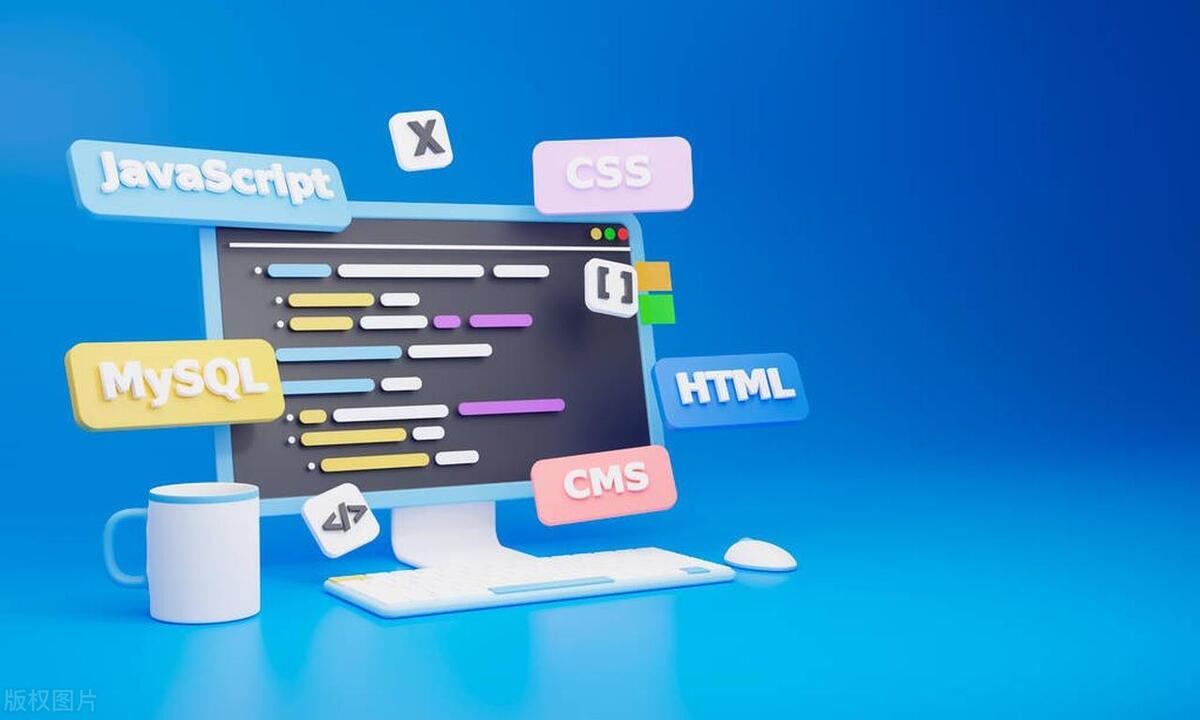A Comprehensive Guide to TypeScript for JavaScript Developers
Aug 01, 2025 am 06:23 AMTypeScript enhances JavaScript by adding static types, better tooling, and early error detection, making it easier to catch bugs during development. 1. It solves runtime errors through type checking, as shown when a function expecting numbers rejects strings at compile time. 2. Basic types like string, number, and boolean are easy to learn and often inferred automatically. 3. Interfaces define object shapes, ensuring correct structure for function arguments and API responses. 4. Function signatures provide type safety for parameters and return values, including support for function types. 5. Union and literal types restrict values to specific options, improving predictability. 6. Generics enable reusable, type-safe functions across different data types. To adopt TypeScript, start by installing it, renaming .js files to .ts, adding types incrementally, using any sparingly, and enabling strict mode over time. With strong tooling support like autocomplete, refactoring, and inline errors, plus widespread library compatibility via @types, TypeScript improves code quality and developer experience. Avoid pitfalls like overusing any, excessive annotations, ignoring strict mode, and confusing interface with type—use interface for objects and type for unions or advanced logic. Ultimately, TypeScript doesn’t replace JavaScript but enhances it, allowing developers to scale applications with confidence by starting small and gradually introducing types, making it essential for real-world JavaScript development.

If you're a JavaScript developer, TypeScript might seem like just another layer of complexity at first. But once you get past the initial learning curve, you’ll realize it’s one of the most practical upgrades you can make to your development workflow. TypeScript is essentially JavaScript with superpowers — static types, better tooling, and early error detection — all while compiling down to plain JavaScript.

Here’s a practical guide to help JavaScript developers understand and adopt TypeScript smoothly.
What TypeScript Solves (That JavaScript Doesn’t)
JavaScript is dynamic and flexible, but that flexibility can lead to runtime errors that are hard to catch early. For example:

function add(a, b) {
return a b;
}
add(5, "hello"); // Returns "5hello" — probably not what you wantedIn a large codebase, these kinds of bugs can slip through tests and cause issues in production.
TypeScript adds type annotations to catch these problems at compile time:

function add(a: number, b: number): number {
return a b;
}
add(5, "hello"); // ? Error: Argument of type 'string' is not assignable to 'number'This doesn’t change how the function works — it still runs as JavaScript — but you get immediate feedback during development.
Key Features Every JavaScript Developer Should Know
1. Basic Types Are Simple to Learn
You don’t need to master complex type theory to start. TypeScript’s basic types map directly to JavaScript primitives:
stringnumberbooleannull,undefinedobject,array,function
Example:
let username: string = "Alice"; let age: number = 30; let isActive: boolean = true; let tags: string[] = ["ts", "js", "dev"];
Even better: TypeScript often infers types automatically:
let username = "Alice"; // TypeScript knows this is a string
So you don’t always have to annotate.
2. Interfaces for Object Shapes
In JavaScript, objects are everywhere — function arguments, API responses, config options. TypeScript lets you define their structure using interface or type.
interface User {
id: number;
name: string;
email?: string; // Optional property
readonly role: string; // Can't be changed after creation
}
function printUser(user: User) {
console.log(user.name, user.role);
}Now if you pass an object missing id or name, TypeScript warns you.
3. Function Signatures with Type Safety
You can type function parameters and return values:
function multiply(a: number, b: number): number {
return a * b;
}You can also define function types:
type MathOp = (a: number, b: number) => number; const divide: MathOp = (a, b) => a / b;
This helps when passing callbacks or storing functions in variables.
4. Working with Union and Literal Types
Sometimes a value can be one of several types:
function renderLoading(state: "loading" | "success" | "error") {
// Only these three strings are allowed
}Or handle mixed data:
let response: string | number; response = "Success"; response = 200; // OK
Use typeof checks to safely handle unions:
if (typeof response === "string") {
console.log(response.toUpperCase());
}5. Generics: Reusable Type Logic
Generics let you write functions and components that work with any type, while still keeping type safety.
function identity<T>(arg: T): T {
return arg;
}
let output = identity<string>("hello"); // T is string
let output2 = identity(42); // TypeScript infers T as numberThis is especially useful for utility functions, APIs, and React components.
How to Start Using TypeScript Today
You don’t need to rewrite your entire app. Here’s how to adopt TypeScript incrementally:
Step 1: Install TypeScript
npm install -D typescript npx tsc --init # Creates tsconfig.json
Step 2: Rename
.jsfiles to.ts(or.tsxfor React)Step 3: Start adding types where it makes sense
Step 4: Use
anytemporarily for complex legacy code (but aim to replace it)Step 5: Enable strict mode in
tsconfig.jsonover time
Tip: Use // @ts-ignore sparingly — it’s like eslint-disable, but for types.
Tooling and Developer Experience
One of the biggest wins of TypeScript is the tooling:
- Autocomplete works better because the IDE knows object shapes
- Refactoring is safer — rename a property, and TypeScript updates all references
- Inline errors as you type (in VS Code, WebStorm, etc.)
- Jump to definition, even across files
You’ll spend less time console-logging to check what an object contains.
Also, most popular libraries (React, Express, Node.js, etc.) have built-in or @types support:
npm install @types/node npm install @types/react
So you get full IntelliSense for third-party code.
Common Pitfalls and How to Avoid Them
Overusing
any: It defeats the purpose. Useunknowninstead when you don’t know the type, then validate at runtime.Too much type annotation: Let TypeScript infer when possible. This keeps code clean.
Ignoring
strictmode: Enablestrict: trueintsconfig.jsoneventually. It catches null/undefined errors and enforces better practices.-
Confusing
interfacevstype: They’re similar, but:-
interfacecan be extended (extends) -
typesupports unions and advanced types - Use
interfacefor objects,typefor others
-
Final Thoughts
TypeScript isn’t about making JavaScript “l(fā)ess flexible.” It’s about scaling confidence as your app grows. You still write JavaScript — same syntax, same runtime — but with a safety net.
You’ll catch bugs before they happen, understand code faster, and collaborate more effectively.
And the best part? You can start small. Convert one file. Add types to one function. See the benefit. Then keep going.
TypeScript doesn’t replace JavaScript — it enhances it. And for any JavaScript developer building real-world apps, it’s quickly becoming essential.
Basically, if you're writing JavaScript beyond small scripts, TypeScript is worth the investment.
The above is the detailed content of A Comprehensive Guide to TypeScript for JavaScript Developers. For more information, please follow other related articles on the PHP Chinese website!

Hot AI Tools

Undress AI Tool
Undress images for free

Undresser.AI Undress
AI-powered app for creating realistic nude photos

AI Clothes Remover
Online AI tool for removing clothes from photos.

Clothoff.io
AI clothes remover

Video Face Swap
Swap faces in any video effortlessly with our completely free AI face swap tool!

Hot Article

Hot Tools

Notepad++7.3.1
Easy-to-use and free code editor

SublimeText3 Chinese version
Chinese version, very easy to use

Zend Studio 13.0.1
Powerful PHP integrated development environment

Dreamweaver CS6
Visual web development tools

SublimeText3 Mac version
God-level code editing software (SublimeText3)
 How does React handle focus management and accessibility?
Jul 08, 2025 am 02:34 AM
How does React handle focus management and accessibility?
Jul 08, 2025 am 02:34 AM
React itself does not directly manage focus or accessibility, but provides tools to effectively deal with these issues. 1. Use Refs to programmatically manage focus, such as setting element focus through useRef; 2. Use ARIA attributes to improve accessibility, such as defining the structure and state of tab components; 3. Pay attention to keyboard navigation to ensure that the focus logic in components such as modal boxes is clear; 4. Try to use native HTML elements to reduce the workload and error risk of custom implementation; 5. React assists accessibility by controlling the DOM and adding ARIA attributes, but the correct use still depends on developers.
 Describe the difference between shallow and full rendering in React testing.
Jul 06, 2025 am 02:32 AM
Describe the difference between shallow and full rendering in React testing.
Jul 06, 2025 am 02:32 AM
Shallowrenderingtestsacomponentinisolation,withoutchildren,whilefullrenderingincludesallchildcomponents.Shallowrenderingisgoodfortestingacomponent’sownlogicandmarkup,offeringfasterexecutionandisolationfromchildbehavior,butlacksfulllifecycleandDOMinte
 What is the significance of the StrictMode component in React?
Jul 06, 2025 am 02:33 AM
What is the significance of the StrictMode component in React?
Jul 06, 2025 am 02:33 AM
StrictMode does not render any visual content in React, but it is very useful during development. Its main function is to help developers identify potential problems, especially those that may cause bugs or unexpected behavior in complex applications. Specifically, it flags unsafe lifecycle methods, recognizes side effects in render functions, and warns about the use of old string refAPI. In addition, it can expose these side effects by intentionally repeating calls to certain functions, thereby prompting developers to move related operations to appropriate locations, such as the useEffect hook. At the same time, it encourages the use of newer ref methods such as useRef or callback ref instead of string ref. To use Stri effectively
 Vue with TypeScript Integration Guide
Jul 05, 2025 am 02:29 AM
Vue with TypeScript Integration Guide
Jul 05, 2025 am 02:29 AM
Create TypeScript-enabled projects using VueCLI or Vite, which can be quickly initialized through interactive selection features or using templates. Use tags in components to implement type inference with defineComponent, and it is recommended to explicitly declare props and emits types, and use interface or type to define complex structures. It is recommended to explicitly label types when using ref and reactive in setup functions to improve code maintainability and collaboration efficiency.
 Server-Side Rendering with Next.js Explained
Jul 23, 2025 am 01:39 AM
Server-Side Rendering with Next.js Explained
Jul 23, 2025 am 01:39 AM
Server-siderendering(SSR)inNext.jsgeneratesHTMLontheserverforeachrequest,improvingperformanceandSEO.1.SSRisidealfordynamiccontentthatchangesfrequently,suchasuserdashboards.2.ItusesgetServerSidePropstofetchdataperrequestandpassittothecomponent.3.UseSS
 A Deep Dive into WebAssembly (WASM) for Front-End Developers
Jul 27, 2025 am 12:32 AM
A Deep Dive into WebAssembly (WASM) for Front-End Developers
Jul 27, 2025 am 12:32 AM
WebAssembly(WASM)isagame-changerforfront-enddevelopersseekinghigh-performancewebapplications.1.WASMisabinaryinstructionformatthatrunsatnear-nativespeed,enablinglanguageslikeRust,C ,andGotoexecuteinthebrowser.2.ItcomplementsJavaScriptratherthanreplac
 Vue CLI vs Vite: Choosing Your Build Tool
Jul 06, 2025 am 02:34 AM
Vue CLI vs Vite: Choosing Your Build Tool
Jul 06, 2025 am 02:34 AM
Vite or VueCLI depends on project requirements and development priorities. 1. Startup speed: Vite uses the browser's native ES module loading mechanism, which is extremely fast and cold-start, usually completed within 300ms, while VueCLI uses Webpack to rely on packaging and is slow to start; 2. Configuration complexity: Vite starts with zero configuration, has a rich plug-in ecosystem, which is suitable for modern front-end technology stacks, VueCLI provides comprehensive configuration options, suitable for enterprise-level customization but has high learning costs; 3. Applicable project types: Vite is suitable for small projects, rapid prototype development and projects using Vue3, VueCLI is more suitable for medium and large enterprise projects or projects that need to be compatible with Vue2; 4. Plug-in ecosystem: VueCLI is perfect but has slow updates,
 How to manage component state using immutable updates in React?
Jul 10, 2025 pm 12:57 PM
How to manage component state using immutable updates in React?
Jul 10, 2025 pm 12:57 PM
Immutable updates are crucial in React because it ensures that state changes can be detected correctly, triggering component re-rendering and avoiding side effects. Directly modifying state, such as push or assignment, will cause React to be unable to detect changes. The correct way to do this is to create new objects instead of old objects, such as updating an array or object using the expand operator. For nested structures, you need to copy layer by layer and modify only the target part, such as using multiple expansion operators to deal with deep attributes. Common operations include updating array elements with maps, deleting elements with filters, adding elements with slices or expansion. Tool libraries such as Immer can simplify the process, allowing "seemingly" to modify the original state but generate new copies, but increase project complexity. Key tips include each






